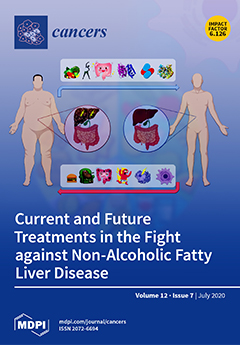It has long been recognized that albumin has prognostic value in patients with cancer. However, although the Global Leadership Initiative on Malnutrition GLIM criteria (based on five diagnostic criteria, three phenotypic criteria and two etiologic criteria) recognize inflammation as an important etiologic factor in malnutrition, there are limited data regarding the association between albumin, nutritional risk, body composition and systemic inflammation, and whether albumin is associated with mortality independent of these parameters. The aim of this study was to examine the relationship between albumin, nutritional risk, body composition, systemic inflammation, and outcomes in patients with colorectal cancer (CRC). A retrospective cohort study (
n = 795) was carried out in which patients were divided into normal and hypoalbuminaemic groups (albumin < 35 g/L) in the presence and absence of a systemic inflammatory response C-reactive protein (CRP > 10 and <10 mg/L, respectively). Post-operative complications, severity of complications and mortality were considered as outcome measures. Categorical variables were analyzed using Chi-square test χ
2 or linear-by-linear association. Survival data were analyzed using univariate and multivariate Cox regression. In the presence of a systemic inflammatory response, hypoalbuminemia was directly associated with Malnutrition Universal Screening Tool MUST (
p < 0.001) and inversely associated with Body Mass Index BMI (
p < 0.001), subcutaneous adiposity (
p < 0.01), visceral obesity (
p < 0.01), skeletal muscle index (
p < 0.001) and skeletal muscle density (
p < 0.001). There was no significant association between hypoalbuminemia and either the presence of complications or their severity. In the absence of a systemic inflammatory response (
n = 589), hypoalbuminemia was directly associated with MUST (
p < 0.05) and inversely associated with BMI (
p < 0.01), subcutaneous adiposity (
p < 0.05), visceral adiposity (
p < 0.05), skeletal muscle index (
p < 0.01) and skeletal muscle density (
p < 0.001). Hypoalbuminemia was, independently of inflammatory markers, associated with poorer cancer-specific and overall survival (both
p < 0.001). The results suggest that hypoalbuminemia in patients with CRC reflects both increased nutritional risk and greater systemic inflammatory response and was independently associated with poorer survival in patients with CRC.
Full article






